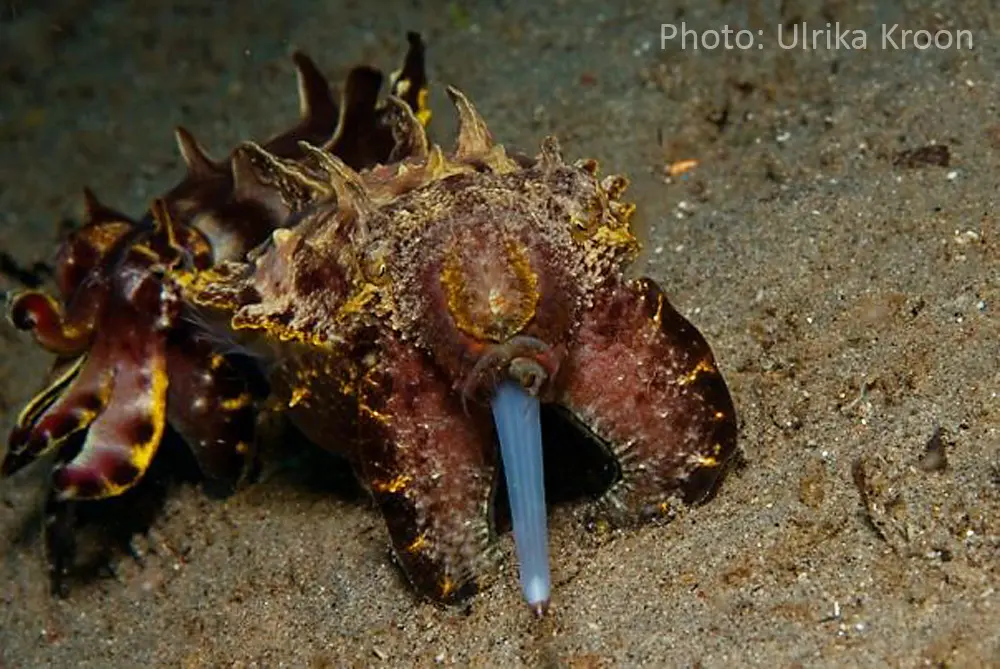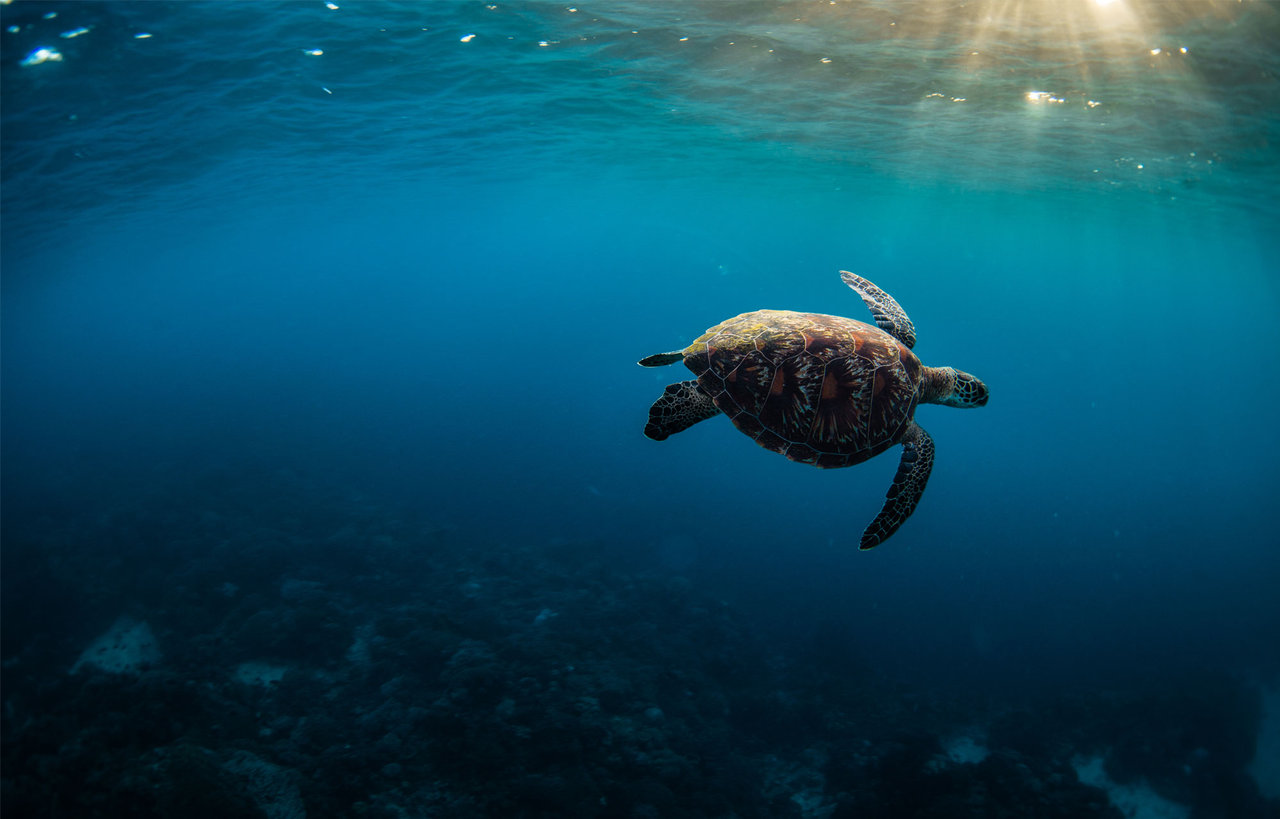Flamboyant cuttlefish are some of the craziest critters that we have here in Dauin. You may have seen the photos of the unborn flamboyant cuttlefish in its egg that has been featured on our Atmosphere facebook a lot this week? Amazing shot – but it doesn’t end there…
Although these critters – found in the Indo-Pacific – are the same color as the substrate while resting, they transform when they’re hunting, mating, or disturbed. They start pulsating in whites, yellows, purples, and reds with waves of color spreading over their bodies. These colors are controlled by their brain using chromatophores, which are color-changing cells and can respond instantly. Many times you won’t see a flamboyant cuttlefish until you swim directly over it and, all of a sudden, that rock you just ignored instantly explodes into color.

A juvenile flamboyant cuttlefish – despite its tiny size, it can already display its colors!
They’re different from many other cuttlefish in that their cuttlebone, which regulates buoyancy, is too small for them to constantly swim, so they spend most of their time on the bottom resting or walking unless threatened or harassed. They walk by using two lobes on the underside of their mantle, which is the body, as well as using the pair outward tentacles at the front.
When they hunt, they have two ‘feeding tentacles’ which are hidden inside of their main eight tentacles. These shoot out when they find some prey (small crustaceans and fish) and grab on, pulling them back into the other tentacles where the prey is then moved to a beak-like mouth to be digested. Another interesting fact about these critters is that they are toxic!

A flamboyant cuttlefish hunting – the feeding tentacle is fast as lightning!
According to researcher Mark Norman, they are as toxic as blue-ringed octopuses and the flesh itself is poisonous. The toxin is in a completely different class of toxins which could potentially be the key to discoveries for some human medical conditions. There haven’t been any human deaths attributed to the Flamboyant cuttlefish, but they definitely don’t show up on any menus! Remember to keep your eyes open next time you are out diving in the Indo-Pacific and that the algae-covered rock you plan to ignore may just be a resting flamboyant cuttlefish.
Next time at Atmosphere Resorts – ask your divemaster to try and find a flamboyant cuttlefish. We see them on our housereef quite frequently.
Your marine biologist /Daniel






